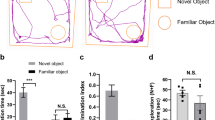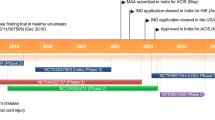Abstract
Previous studies have suggested that thrombospondin-1 (TSP-1) regulates the transforming growth factor beta 1 (TGF-β1)/phosphorylated Smad2/3 (pSmad2/3) pathway. Moreover, TSP-1 is closely associated with epilepsy. However, the role of the TSP-1-regulated TGF-β1/pSmad2/3 pathway in seizures remains unclear. In this study, changes in this pathway were assessed following kainic acid (KA)-induced status epilepticus (SE) in rats. The results showed that increases in the TSP-1/TGF-β1/pSmad2/3 levels spatially and temporally matched the increases in glial fibrillary acidic protein (GFAP)/chondroitin sulfate (CS56) levels following KA administration. Inhibition of TSP-1 expression by small interfering RNA or inhibition of TGF-β1 activation with a Leu-Ser-Lys-Leu peptide significantly reduced the severity of KA-induced acute seizures. These anti-seizure effects were accompanied by decreased GFAP/CS56 expression and Smad2/3 phosphorylation. Moreover, inhibiting Smad2/3 phosphorylation with ponatinib or SIS3 also significantly reduced seizure severity, alongside reducing GFAP/CS56 immunoreactivity. These results suggest that the TSP-1-regulated TGF-β1/pSmad2/3 pathway plays a key role in KA-induced SE and astrogliosis, and that inhibiting this pathway may be a potential anti-seizure strategy.








Similar content being viewed by others
References
Johannessen SI, Gran L, Sillanpaa M, Johnson T. Intractable Epilepsy. Petersfield, UK: Wrightson Biomedical Publishing 1995: 1–12.
Leppik IE. Intractable epilepsy in adults. Epilepsy Res 1992, 5: 7–11.
Wilcox KS, Gee JM, Gibbons MB, Tvrdik P. White JA. Altered structure and function of astrocytes following status epilepticus. Epilepsy Behav 2015, 49: 17–19.
Coulter DA, Steinhauser C. Role of astrocytes in epilepsy. Cold Spring Harb Perspect Med 2015, 5: a022434.
Devinsky O, Vezzani A, Najjar S, De Lanerolle NC, Rogawski MA. Glia and epilepsy: excitability and inflammation. Trends Neurosci 2013, 36: 174–184.
Guo D, Zou J. Rapamycin attenuates acute seizure-induced astrocyte injury in mice in vivo. Sci Rep 2017, 7: 2867.
Robel S. Astroglial scarring and seizures: a cell biological perspective on epilepsy. Neuroscientist 2016, 23: 152–168.
Okada-Tsuchioka M, Segawa M, Kajitani N, Hisaoka-Nakashima K, Shibasaki C, Morinobu S, et al. Electroconvulsive seizure induces thrombospondin-1 in the adult rat hippocampus. Prog Neuropsychopharmacol Biol Psychiatry 2014, 48: 236–244.
Shi Y, Massagué J. Mechanisms of TGF-beta signaling from cell membrane to the nucleus. Cell 2003, 113: 685–700.
Cacheaux LP, Ivens S, David Y, Lakhter AJ, Bar-Klein G, Shapira M, et al. Transcriptome profiling reveals TGF-beta signaling involvement in epileptogenesis. J Neurosci 2009, 29: 8927–8935.
Bar-Klein G, Cacheaux LP, Kamintsky L, Prager O, Weissberg I, Schoknecht K, et al. Losartan prevents acquired epilepsy via TGF-β signaling suppression. Ann Neurol 2014, 75: 864–875.
Weissberg I, Wood L, Kamintsky L, Vazquez O, Milikovsky DZ, Alexander A, et al. Albumin induces excitatory synaptogenesis through astrocytic TGF-β/ALK5 signaling in a model of acquired epilepsy following blood–brain barrier dysfunction. Neurobiol Dis 2015, 78: 115–125.
Yu CY, Gui W, He HY, Wang XS, Zuo J, Huang L, et al. Neuronal and astroglial TGFβ-Smad3 signaling pathways differentially regulate dendrite growth and synaptogenesis. Neuromolecular Med 2014, 16: 457–472.
Krishna SM, Golledge J. The role of thrombospondin-1 in cardiovascular health and pathology. Int J Cardiol 2013, 168: 692–706.
Hou M, Bao X, Luo F, Chen X, Liu L, Wu M. HMGA2 modulates the TGFβ/Smad, TGFβ/ERK and Notch signaling pathways in human lens epithelial-mesenchymal transition. Curr Mol Med 2018, 18: 71–82.
Moustakas A, Souchelnytskyi S, Heldin CH. Smad regulation in TGF–beta signal transduction. J Cell Sci 2001, 114: 4359–4369.
Cui L, Wang Y, Yu R, Li B, Xie S, Gao Y, et al. Jia-Shen decoction-medicated serum inhibits angiotensin-II induced cardiac fibroblast proliferation via the TGF-β1/Smad signaling pathway. Mol Med Rep 2016, 14: 1610–1616.
Sun H, Ma L, Zhang Y, Pan X, Wang C, Zhang J, et al. A purinergic P2 receptor family-mediated increase in thrombospondin-1 bolsters synaptic density and epileptic seizure activity in the amygdala-kindling rat model. Front Cell Neurosci 2018, 12: 302.
Racine RJ. Modification of seizure activity by electrical stimulation. II. Motor seizure. Electroencephalogr Clin Neurophysiol 1972, 32: 281–294.
Jinnin M, Ihn H, Tamaki K. Characterization of SIS3, a novel specific inhibitor of Smad3, and its effect on transforming growth factor-beta1-induced extracellular matrix expression. Mol Pharmacol 2006, 69: 597–607.
Miyazawa K, Shinozaki K, Hara T, Furuya T, Miyazono K. Two major Smad pathways in TGF-beta superfamily signalling. Genes Cells 2002, 7: 1191–1204.
Wang D, Zhang X, Wang M, Zhou D, Pan H, Shu Q, et al. Early activation of astrocytes does not affect amyloid plaque load in an animal model of Alzheimer’s disease. Neurosci Bull 2018, 34: 912–920.
Chen G, Luo X, Qadri MY, Berta T, Ji RR. Sex-dependent glial signaling in pathological pain: distinct roles of spinal microglia and astrocytes. Neurosci Bull 2018, 34: 98–108.
Okuda H. A review of functional heterogeneity among astrocytes and the CS56-specific antibody-mediated detection of a subpopulation of astrocytes in adult brains. Anat Sci Int 2018, 93: 161–168.
Christopherson KS, Ullian EM, Stokes CC, Mullowney CE, Hell JW, Agah A, et al. Thrombospondins are astrocyte-secreted proteins that promote CNS synaptogenesis. Cell 2005, 120: 421–433.
Xu J, Xiao N, Xia J. Thrombospondin 1 accelerates synaptogenesis in hippocampal neurons through neuroligin 1. Nat Neurosci 2010, 13: 22–24.
Iruela-Arispe ML, Liska DJ, Sage EH, Bornstein P. Differential expression of thrombospondin 1, 2, and 3 during murine development. Dev Dyn 1993, 197: 40–56.
Yu K, Ge J, Summers JB, Li F, Liu X, Ma P, et al. TSP-1 secreted by bone marrow stromal cells contributes to retinal ganglion cell neurite outgrowth and survival. PLoS One 2008, 3: e2470.
Cahoy JD, Emery B, Kaushal A, Foo LC, Zamanian JL, Christopherson KS, et al. A transcriptome database for astrocytes, neurons, and oligodendrocytes: a new resource for understanding brain development and function. J Neurosci 2008, 28: 264–278.
Eroglu C, Allen NJ, Susman MW, O’Rourke NA, Park CY, Ozkan E, et al. Gabapentin receptor alpha2delta-1 is a neuronal thrombospondin receptor responsible for excitatory CNS synaptogenesis. Cell 2009, 139: 380–392.
Santolini I, Celli R, Cannella M, Imbriglio T, Guiducci M, Parisi P, et al. Alterations in the α2 δ ligand, thrombospondin-1, in a rat model of spontaneous absence epilepsy and in patients with idiopathic/genetic generalized epilepsies. Epilepsia 2017, 58: 1993–2001.
Mendus D, Rankin-Gee EK, Mustapha M, Porter BE. Increased sensitivity to kindling in mice lacking TSP1. Neuroscience 2015, 305: 302–308.
Egbenya DL, Hussain S, Lai YC, Xia J, Anderson AE, Davanger S. Changes in synaptic AMPA receptor concentration and composition in chronic temporal lobe epilepsy. Mol Cell Neurosci 2018, 92: 93–103.
Lorgen JØ, Egbenya DL, Hammer J, Davanger S. PICK1 facilitates lasting reduction in GluA2 concentration in the hippocampus during chronic epilepsy. Epilepsy Res 2017, 137: 25–32.
Pfieger FW, Barres BA. Synaptic efficacy enhanced by glial cells in vitro. Science 1997, 277: 1684–1687.
Lafyatis R. Transforming growth factor β-at the centre of systemic sclerosis. Nat Rev Rheumatol 2014, 10: 706–719.
Cheng C, Lau SK, Doering LC. Astrocyte-secreted thrombospondin-1 modulates synapse and spine defects in the fragile X mouse model. Mol Brain 2016, 9: 74.
Hayashi H, Sakai T. Biological significance of local TGF-beta activation in liver diseases. Front Physiol 2012, 3: 12.
Sweetwyne MT, Murphy-Ullrich JE. Thrombospondin 1 in tissue repair and fibrosis: TGF-beta-dependent and independent mechanisms. Matrix Biol 2012, 31: 178–186.
Tran MD, Furones-Alonso O, Sanchez-Molano J, Bramlett HM. Trauma-induced expression of astrocyte thrombospondin-1 is regulated by P2 receptors coupled to protein kinase cascades. Neuroreport 2012, 23: 721–726.
Kawarada Y, Inoue Y, Kawasaki F, Fukuura K, Sato K, Tanaka T, et al. TGF-beta induces p53/Smads complex formation in the PAI-1 promoter to activate transcription. Sci Rep 2016, 6: 35483.
Chin GS, Liu W, Peled Z, Lee TY, Steinbrech DS, Hsu M, et al. Differential expression of transforming growth factor-beta receptors I and II and activation of Smad 3 in keloid fibroblasts. Plast Reconstr Surg 2001, 108: 423–429.
Zhang R, Wu Y, Xie F, Zhong Y, Wang Y, Xu M, et al. RGMa mediates reactive astrogliosis and glial scar formation through TGFbeta1/Smad2/3 signaling after stroke. Cell Death Differ 2018, 25: 1503–1516.
Ivens S, Kaufer D, Flores LP, Bechmann I, Zumsteg D, Tomkins O, et al. TGF-beta receptor-mediated albumin uptake into astrocytes is involved in neocortical epileptogenesis. Brain 2007, 130: 535–547.
Yu Y, Li J, Zhou H, Xiong Y, Wen Y, Li H. Functional importance of the TGF-β1/Smad3 signaling pathway in oxygen-glucose-deprived (OGD) microglia and rats with cerebral ischemia. Int J Biol Macromol 2018, 116: 537–544.
Tichauer JE, Flores B, Soler B, Eugenín-von Bernhardi L, Ramírez G, von Bernhardi R. Age-dependent changes on TGFβ1 Smad3 pathway modify the pattern of microglial cell activation. Brain Behav Immun 2014, 37: 187–196.
Yu W, Du Y, Zou Y, Wang X, Stephani U, Lü Y. Smad anchor for receptor activation contributes to seizures in temporal lobe epilepsy. Synapse 2017, 71: 3.
Christensen KV, Leffers H, Watson WP, Sánchez C, Kallunki P, Egebjerg J. Levetiracetam attenuates hippocampal expression of synaptic plasticity-related immediate early and late response genes in amygdala-kindled rats. BMC Neurosci 2010, 11: 9.
Chen Y, Shimotake A, Matsumoto R, Kunieda T, Kikuchi T, Miyamoto S, et al. The ‘when’ and ‘where’ of semantic coding in the anterior temporal lobe: Temporal representational similarity analysis of electrocorticogram data. Cortex 2016, 79: 1–13.
Qu Y, Zhang L, Kang Z, Jiang W, Lv C. Ponatinib ameliorates pulmonary fibrosis by suppressing TGF-beta1/Smad3 pathway. Pulm Pharmacol Ther 2015, 34: 1–7.
Hsu D. The dentate gyrus as a filter or gate: a look back and a look ahead. Prog Brain Res 2007, 163: 601–613.
Heinemann U, Beck H, Dreier JP, Ficker E, Stabel J, Zhang CL. The dentate gyrus as a regulated gate for the propagation of epileptiform activity. Epilepsy Res 1992, 7: 273–280.
Petit LF, Jalabert M, Buhler E, Malvache A, Peret A, Chauvin Y, et al. Normotopic cortex is the major contributor to epilepsy in experimental double cortex. Ann Neurol 2014, 76: 428–442.
Bernasconi A, Martinez V, Rosa-Neto P, D’Agostino D, Bernasconi N, Berkovic S, et al. Surgical resection for intractable epilepsy in “double cortex” syndrome yields inadequate results. Epilepsia 2001, 42: 1124–1129.
Mai R, Tassi L, Cossu M, Francione S, Lo Russo G, Garbelli R, et al. A neuropathological, stereo-EEG, and MRI study of subcortical band heterotopia. Neurology 2003, 60: 1834–1838b.
Parker CS, Clayden JD, Cardoso MJ, Rodionov R, Duncan JS, Scott C, et al. Structural and effective connectivity in focal epilepsy. Neuroimage Clin 2018, 17: 943–952.
Acknowledgements
This work was supported by the National Natural Science Foundation of China (81573412), the Key Research and Development Plan (2018GSF121004), and the Natural Science Foundation of Shandong Province, China (ZR2014JL055).
Author information
Authors and Affiliations
Corresponding author
Ethics declarations
Conflict of interest
The authors declare that they have no conflict of interest.
Electronic supplementary material
Below is the link to the electronic supplementary material.
Rights and permissions
About this article
Cite this article
Zhang, Y., Zhang, M., Zhu, W. et al. Role of Elevated Thrombospondin-1 in Kainic Acid-Induced Status Epilepticus. Neurosci. Bull. 36, 263–276 (2020). https://doi.org/10.1007/s12264-019-00437-x
Received:
Accepted:
Published:
Issue Date:
DOI: https://doi.org/10.1007/s12264-019-00437-x




